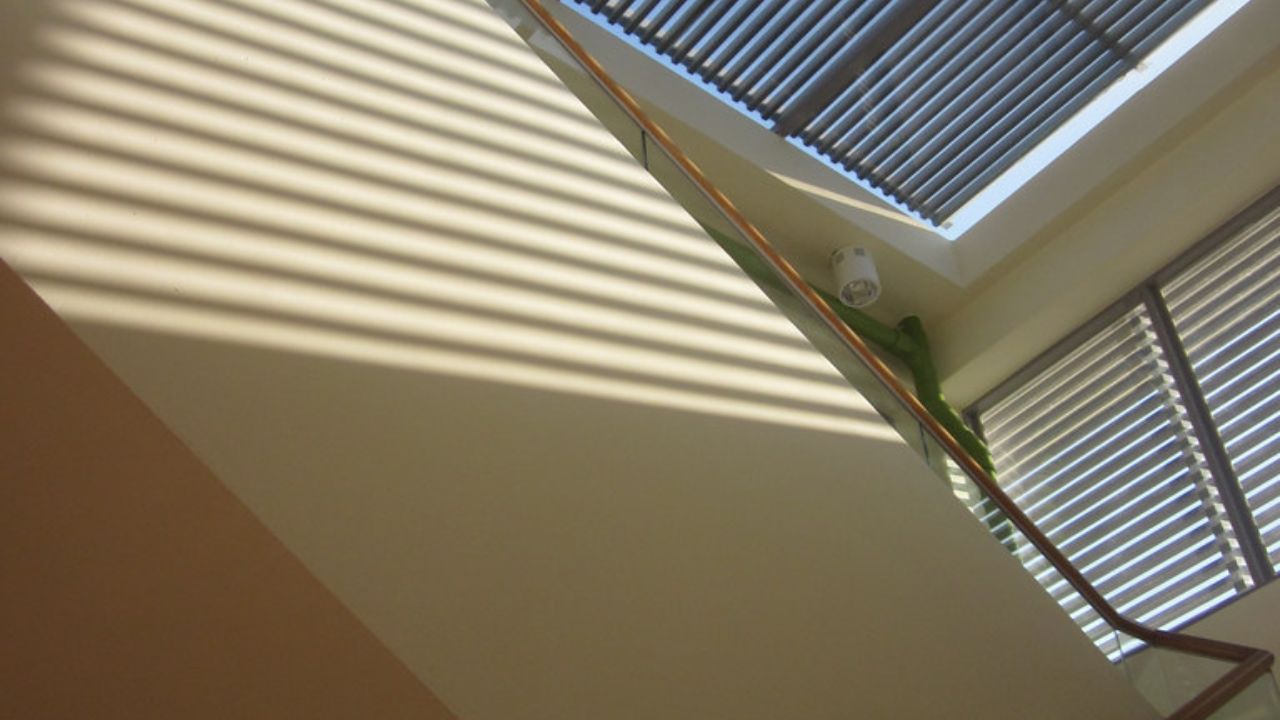
You may have pondered the possibility of adding a skylight to your corrugated roof. While the idea seems intriguing, the practicality and feasibility of such an installation may raise questions. The process involves a careful balance of factors you’ll need to contemplate before deciding. From structural implications to weatherproofing challenges, weigh essential aspects before leaping and enhancing your space with a skylight.
Listen to this Article
Before proceeding with installing a skylight in your corrugated roof, it’s essential to conduct a thorough feasibility assessment to guarantee structural integrity and proper functionality. Begin by examining the roof’s material and condition. Corrugated roofs are typically made of metal or plastic, so ensure the chosen skylight is compatible with this material. Assess the roof’s slope as well, as it will impact water runoff and potential leaks.
Evaluate the available space on your roof for the skylight installation. Consider obstructions like vents or chimneys that may affect placement. Additionally, check for any electrical wiring or plumbing in the area where the skylight will be installed.
Examine the surrounding environment for any potential shading that might diminish the skylight’s effectiveness. It’s important to have unobstructed access to sunlight for the best light transmission.
Lastly, consult with a professional contractor or engineer to ensure that your roof can support the weight of the skylight and that the installation meets building codes and safety standards. Conducting a comprehensive feasibility assessment will help you make an informed decision before proceeding with the skylight installation.
Evaluating the structural feasibility of incorporating skylights into corrugated roofs is an important step before realizing their advantages in terms of improved natural lighting and aesthetic appeal. Skylights in corrugated roofs offer numerous benefits. Firstly, they flood interior spaces with natural light, reducing the need for artificial lighting during the day and creating a more inviting atmosphere. This not only boosts the area’s visual appeal but also contributes to energy efficiency. Additionally, the natural light provided by skylights can positively impact mood and productivity.

Moreover, skylights can help with ventilation, allowing fresh air to circulate and improving indoor air quality. This is particularly beneficial in spaces where proper ventilation is essential. Additionally, skylights can offer sky views, adding a sense of openness and connection to the outdoors. Overall, incorporating skylights into corrugated roofs can transform a space, making it brighter, more pleasant, and visually engaging.
Installing skylights in corrugated roofs presents various challenges that must be carefully addressed to guarantee successful integration. Here are three key challenges to take into account:
- Structural Integrity: Corrugated roofs are designed to provide strength and durability, but cutting an opening for a skylight can compromise the roof’s structural integrity. Proper reinforcement and sealing are important to maintain the roof’s strength and prevent leaks.
- Waterproofing: Corrugated roofs can be more prone to leaks than traditional roofs due to their design. Ensuring proper waterproofing around the skylight is essential to prevent water infiltration and potential damage to the interior of the building.
- Installation Complexity: The unique shape and material of corrugated roofs can make installing skylights more complex. Specialized tools and techniques may be necessary to properly fit the skylight and ensure a secure installation that withstands weather elements.
Addressing these challenges with precision and expertise is important to successfully install skylights in corrugated roofs while maintaining the structural integrity and weatherproofing of the roof.
When positioning skylights in a corrugated roof, it’s essential to carefully assess the best placement to guarantee structural integrity and weatherproofing effectiveness. Skylight placement plays a significant role in maximizing natural light while minimizing heat gain or loss.
To guarantee peak performance, consider the roof’s orientation, the angle of sunlight exposure, and potential obstructions like trees or neighboring structures. Placing skylights on the south-facing side can provide consistent illumination throughout the day, while north-facing skylights may offer softer light.
Additionally, avoid installing skylights in areas prone to pooling water or heavy snow accumulation to prevent leaks and structural damage. Properly positioning skylights can also improve ventilation and create a more comfortable indoor environment.
Proper preparation and precise measurements are essential to guarantee a secure and effective installation of skylights in corrugated roofs. Follow these steps for a successful installation:
- Inspect the Roof: Before starting the installation process, thoroughly examine the corrugated roof for any signs of damage or weak spots. Confirm that the roof can support the weight of the skylight and make any necessary repairs.
- Choose the Skylight Location: Select the ideal location for the skylight based on the roof’s structure and the amount of natural light desired. Consider factors such as sun exposure, interior layout, and aesthetic appeal.
- Install Flashing and Sealing: Properly install flashing around the skylight opening to prevent leaks and ensure a watertight seal. Use high-quality sealants and follow manufacturer instructions meticulously to secure the skylight in place and protect against weather elements.
Yes, skylights can typically be installed in various types of corrugated roofs. Guarantee proper sealing, support, and installation methods are used to prevent leaks and maintain structural integrity. Consult with a professional for guidance.
Skylights can help improve energy efficiency in homes by providing natural light and reducing the need for artificial lighting. Properly installing and selecting energy-efficient skylights can also contribute to better insulation and ventilation.
To maintain skylights, regularly clean the glass to maximize light penetration, check for leaks or cracks, inspect seals for wear, and clear debris from surrounding areas. Proper maintenance improves longevity and performance.
Are There Specific Building Codes for Skylight Installations?
When installing skylights, specific building codes regulate their placement to guarantee safety and compliance. Properly following these guidelines is essential to prevent issues during installation and ensure the skylight functions correctly long-term.
Can Skylights Be Customized to Fit Different Roof Sizes?
When customizing skylights for different roof sizes, ensure accurate measurements to prevent leaks or structural issues. Skylights can be tailored to fit various dimensions, offering versatility and natural light. Consider professional installation for best results.